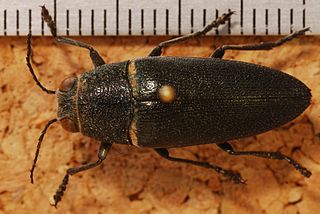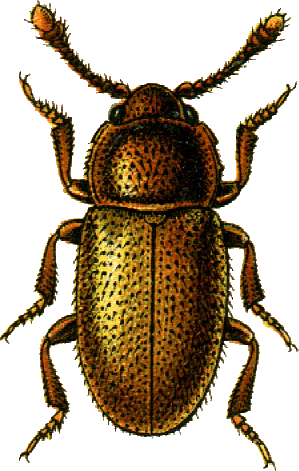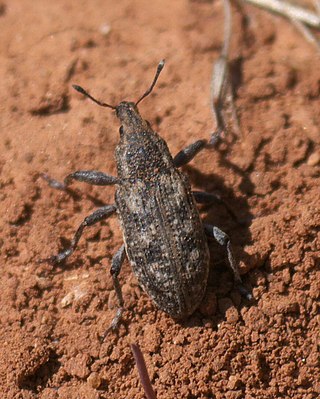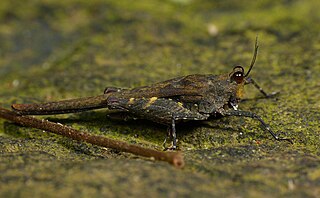
"The Song of the Stormy Petrel" is a short piece of revolutionary literature written by the Russian writer Maxim Gorky in 1901. The poem is written in a variation of unrhymed trochaic tetrameter with occasional Pyrrhic substitutions.

Taenia saginata, commonly known as the beef tapeworm, is a zoonotic tapeworm belonging to the order Cyclophyllidea and genus Taenia. It is an intestinal parasite in humans causing taeniasis and cysticercosis in cattle. Cattle are the intermediate hosts, where larval development occurs, while humans are definitive hosts harbouring the adult worms. It is found globally and most prevalently where cattle are raised and beef is consumed. It is relatively common in Africa, Europe, Southeast Asia, South Asia, and Latin America. Humans are generally infected as a result of eating raw or undercooked beef which contains the infective larvae, called cysticerci. As hermaphrodites, each body segment called proglottid has complete sets of both male and female reproductive systems. Thus, reproduction is by self-fertilisation. From humans, embryonated eggs, called oncospheres, are released with faeces and are transmitted to cattle through contaminated fodder. Oncospheres develop inside muscle, liver, and lungs of cattle into infective cysticerci.

Cryptophagus is a genus of beetles in the family Cryptophagidae, the silken fungus beetles. It is distributed across all the biogeographic realms of the world. Like most of the other beetles in the family, these are fungivores, feeding on fungal spores and hyphae.

Hygrotus is a genus of beetle in family Dytiscidae. It contains two subgenera and about 70 species, including:

Plicifusus is a genus of sea snails, marine gastropod mollusks in the family Buccinidae, the true whelks.

Hippomelas is a genus of beetles in the family Buprestidae, containing the following species:

Brachycerus is a genus of weevils in the family Curculionidae and the subfamily Brachycerinae.

Pactolinus is a genus of the Histeridae family of Beetles
Ctenisodes is a genus of ant-loving beetles in the family Staphylinidae. There are about 14 described species in Ctenisodes.

Cryptophagus saginatus is a species of silken fungus beetle in the family Cryptophagidae. It is found in North America and Europe.
Apleurus saginatus is a species of cylindrical weevil in the beetle family Curculionidae. It is found in North America.

Apleurus is a genus of cylindrical weevils in the beetle family Curculionidae. There are about eight described species in Apleurus.

Xyleborinus is a genus of typical bark beetles in the family Curculionidae. There are more than 80 described species in Xyleborinus.

Criotettix is an Asian genus of ground-hoppers in the tribe Criotettigini.
Neoechinorhynchus is a genus of parasitic worms belonging to the family Neoechinorhynchidae.

Lamprinodes is a genus of beetles belonging to the family Staphylinidae.













